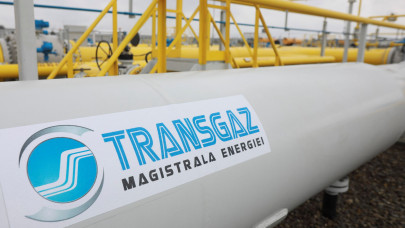According to the international rating agency, the filling rate of European gas storage facilities was 82% at the end of 2022, the highest since 2015.
According to Moody's, this is due to effective supply and demand-side measures taken by European governments, companies adapting to energy shocks, a mild winter so far and increased availability of liquefied natural gas.
The company points out that the price of natural gas has fallen by 80% since its peak last summer, precisely because of higher storage levels.
However, according to the Moody's study, prolonged geopolitical uncertainty and the fundamental and necessary restructuring of Europe's energy supply mix will keep European energy prices well above historical averages for at least the next three years.
However, the rating agency says the supply situation in Europe remains tight for two main reasons. One is that it will be difficult to fully replace natural gas supplies from Russia with alternative sources. Moody's forecast scenario suggests that in the 2023-2024 season, the amount of gas coming to Europe from Russia will be, at best, 20% of last year's levels.
Another reason for the tight situation in Europe that the company expects, according to the study, is that last year China was able to divert LNG supplies to Europe that were tied up for its own use, partly due to weak domestic demand caused by tight restrictions aimed at curbing the coronavirus outbreak. But Moody's said in an analysis on Thursday that this was unlikely to happen again this year.
The analysis also suggests that the LNG market will struggle to keep pace with the sharp rise in demand. Global LNG supply is likely to rise by only 30 billion cubic metres this year, about half of the natural gas Russia piped to Europe last year, according to a Moody's sector analysis presented on Thursday.
Other major London-based analyst houses gave more sanguine assessments in their recent analyses.
Europe has weathered the worst of the gas supply crisis and avoided the worst-case supply scenarios thanks to the measures taken, according to a sector analysis presented by Fitch Ratings in London on Wednesday. “A combination of ample LNG flows, reduced demand and relatively mild weather have helped to avoid gas rationing, and eased the tightness of gas markets in 2022, in line with our expectations,” Fitch said LNG imports to the European Union rose by 51% to 122 billion cubic metres in 2022 from 73 bcm, and it projects further 29% growth to 155 bcm this year.
They expect the global LNG market to be tight this year, helped by the lifting of Chinese restrictions previously imposed to contain the coronavirus outbreak.
Fitch Ratings believes that storage and liquefied natural gas (LNG) supplies at record highs should allow the EU to remain resilient in a case of a complete cut-off of Russian gas supplies in 2023.
The Eurasia Group, a London-based political-economic risk analysis group, said in a new study that it considers it very unlikely, based on recent calculations, that Europe will face a gas shortage in either the current or the 2023-2024 winter season, even if the rest of this winter is exceptionally cold.
According to Eurasia analysts, the increase in gas supplies from non-Russian sources and the decline in winter consumption this year will lead to European gas storage facilities being at least 60% full in March, compared to 20% in the same period last year, allowing Europe to fill its gas storage to maximum capacity ahead of the next winter season, probably in the summer.














